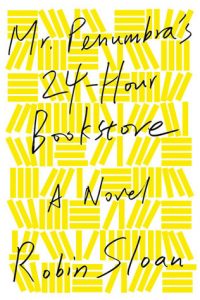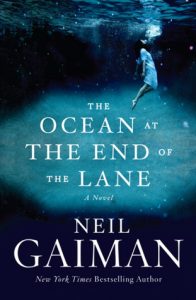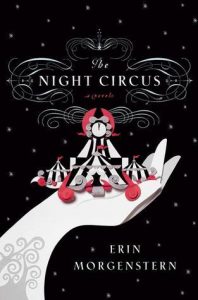And guess what?
We have tax forms!
Just so you are aware, things are a little bit different this year. For Tax Year 2018, you will no longer use Form 1040A or Form 1040EZ, but instead will use the redesigned Form 1040. Many people will only need to file Form 1040 and no schedules.
While our tax appointments are all full, if you need assistance from AARP, you can contact them. Their website also offers a wealth of other numbers and institutions that can provide you with tax assistance.
Not only that, but we have books, too! Here are just some of the new titles that forged their way through this ridiculous week of weather to grace our shelves this week!

Ghost Wall: Sarah Moss is a remarkable author, whose stories always bend and weave around your expectations to produce something truly unique. This slim little tale is packed with emotions and revelations, and is an ideal read for those looking for something to add to the ambiance of a dark winter night. In the north of England, far from the intrusions of cities but not far from civilization, Silvie and her family are living as if they are ancient Britons, surviving by the tools and knowledge of the Iron Age. For two weeks, the length of her father’s vacation, they join an anthropology course set to reenact life in simpler times. The students are fulfilling their coursework; Silvie’s father is fulfilling his lifelong obsession. He has raised her on stories of early man, taken her to witness rare artifacts, recounted time and again their rituals and beliefs―particularly their sacrifices to the bog. Mixing with the students, Silvie begins to see, hear, and imagine another kind of life, one that might include going to university, traveling beyond England, choosing her own clothes and food, speaking her mind. The ancient Britons built ghost walls to ward off enemy invaders, rude barricades of stakes topped with ancestral skulls. When the group builds one of their own, they find a spiritual connection to the past…and the brutalities that marked it. This is a unique kind of dystopian novel that has been riveting readers in the UK and Europe for a while. We’re delighted to finally get our hands on the book that the The Wall Street Journal described as “A master class in compressing an unbearable sense of dread into a book that can be read in a single horrified (and admiring) hour . . . perhaps the finest novel so far to come out of the British literary response to these uneasy times.”
Unmarriageable: Fans of Pride and Prejudice, rejoice! Soniah Kamal has provided you with a delightful retelling of this classic tale, set in modern-day Pakistan. A scandal and vicious rumor concerning the Binat family have destroyed their fortune and prospects for desirable marriages, but Alys, the second and most practical of the five Binat daughters, has found happiness teaching English literature to schoolgirls. Knowing that many of her students won’t make it to graduation before dropping out to marry and have children, Alys teaches them about Jane Austen and her other literary heroes and hopes to inspire the girls to dream of more. When an invitation arrives to the biggest wedding their small town has seen in years, Mrs. Binat, certain that their luck is about to change, excitedly sets to work preparing her daughters to fish for rich, eligible bachelors. On the first night of the festivities, Alys’s lovely older sister, Jena, catches the eye of Fahad “Bungles” Bingla, the wildly successful—and single—entrepreneur. But Bungles’s friend Valentine Darsee is clearly unimpressed by the Binat family. Alys accidentally overhears his unflattering assessment of her and quickly dismisses him and his snobbish ways. As the days of lavish wedding parties unfold, the Binats wait breathlessly to see if Jena will land a proposal—and Alys begins to realize that Darsee’s brusque manner may be hiding a very different man from the one she saw at first glance. Kamal is a witty, insightful writer, and this twist on Austen’s story opens a cultural window that makes it feel fresh and new. Publisher’s Weekly gave this book a starred review, calling it “funny, sometimes romantic, often thought-provoking glimpse into Pakistani culture, one which adroitly illustrates the double standards women face when navigating sex, love, and marriage. This is a must-read for devout Austenites.”
The Kingdom of Copper: S.A. Chakraborty’s follow-up to The City of Brass brings readers right back into her magical fantasy world for a second book that is being hailed by many as better than the series’ debut–no easy feat to manage! Nahri’s life changed forever the moment she accidentally summoned Dara, a formidable, mysterious djinn, during one of her schemes. Whisked from her home in Cairo, she was thrust into the dazzling royal court of Daevabad—and quickly discovered she would need all her grifter instincts to survive there. Now, with Daevabad entrenched in the dark aftermath of a devastating battle, Nahri must forge a new path for herself. But even as she embraces her heritage and the power it holds, she knows she’s been trapped in a gilded cage, watched by a king who rules from the throne that once belonged to her family—and one misstep will doom her tribe. Meanwhile, Ali has been exiled for daring to defy his father. Hunted by assassins, adrift on the unforgiving copper sands of his ancestral land, he is forced to rely on the frightening abilities the marid—the unpredictable water spirits—have gifted him. But in doing so, he threatens to unearth a terrible secret his family has long kept buried. This is a book, and a trilogy, in which to get lost entirely. Library Journal agreed, giving this book a starred review and noting “With a richly immersive setting and featuring complex familial, religious, and racial ties and divides, Chakraborty’s second book in the trilogy wraps readers in a lush and magical story that takes over all the senses.”
No Sunscreen for the Dead: This is Tim Dorsey’s 22nd crime novel, an a rollicking good time it is, too! Serge A. Storms, known to readers and reviewers alike as “The Sunshine State’s most lovable psychopath”, is at it again with his buddy Coleman, ready to hit the next stop on their list of obscure and wacky points of interest in Florida. This time, Serge’s interest is drawn to one of the largest retirement villages in the world—also known as the site of an infamous sex scandal between a retiree and her younger beau that rocked the community. What starts out as an innocent quest to observe elders in their natural habitats, sample the local cuisine, and scope out a condo to live out the rest of their golden years, soon becomes a Robin Hood-like crusade to recover the funds of swindled residents. After all, our seniors should be revered and respected—they’ve heroically fought in wars, garnered priceless wisdom, and they have the best first-hand accounts of bizarre Floridian occurrences only Serge would know about. But as the resident’s rally for Serge to seek justice on their behalves, two detectives are hot on the heels of Serge and Coleman’s murderous trail. A time-hopping narrative full of quirky characters and mayhem, this is a book that series regulars and newcomers alike will be able to enjoy. Booklist loved this installment, saying in its review, “Dorsey’s novels are unfailingly entertaining… Serge is, hands down, the most smoothly charming, irrepressibly goofy, joyfully out-of-his-mind series lead in contemporary mystery fiction…. Don’t miss this one.”
Women Who Rock: Bessie to Beyonce, Girl Groups to Riot Grrrl: Women have played an essential and undeniable role in the evolution of popular music including blues, rock and roll, country, folk, glam rock, punk, and hip hop since the dawn of the music industry. Today, in a world traditionally dominated by male artists, women have a stronger influence on popular music than ever before. Yet, not since the late nineteen-nineties has there been a major work that acknowledges and pays tribute to the female artists who have contributed to, defined, and continue to make inroads in music. In this sensational book, writer and professor of journalism Evelyn McDonnell leads a team of women rock writers and pundits in an all-out celebration of 104 of the greatest female musicians. Organized chronologically, the book profiles each artist and places her in the context of both her genre and the musical world at large. Sidebars throughout recall key moments that shaped both the trajectory of music and how those moments influenced or were influenced by women artists. Packed full of illustrations and sensational details, Vulture echoed our sentiments when it said in its review, “It’s about damned time there was a collection dedicated to major women musicians. Women Who Rock is a neon-pink compendium of odes to legends past and present…[It] takes the rallying cry “Girls to the front” to another level.”
Until next week, beloved patrons, happy reading!













